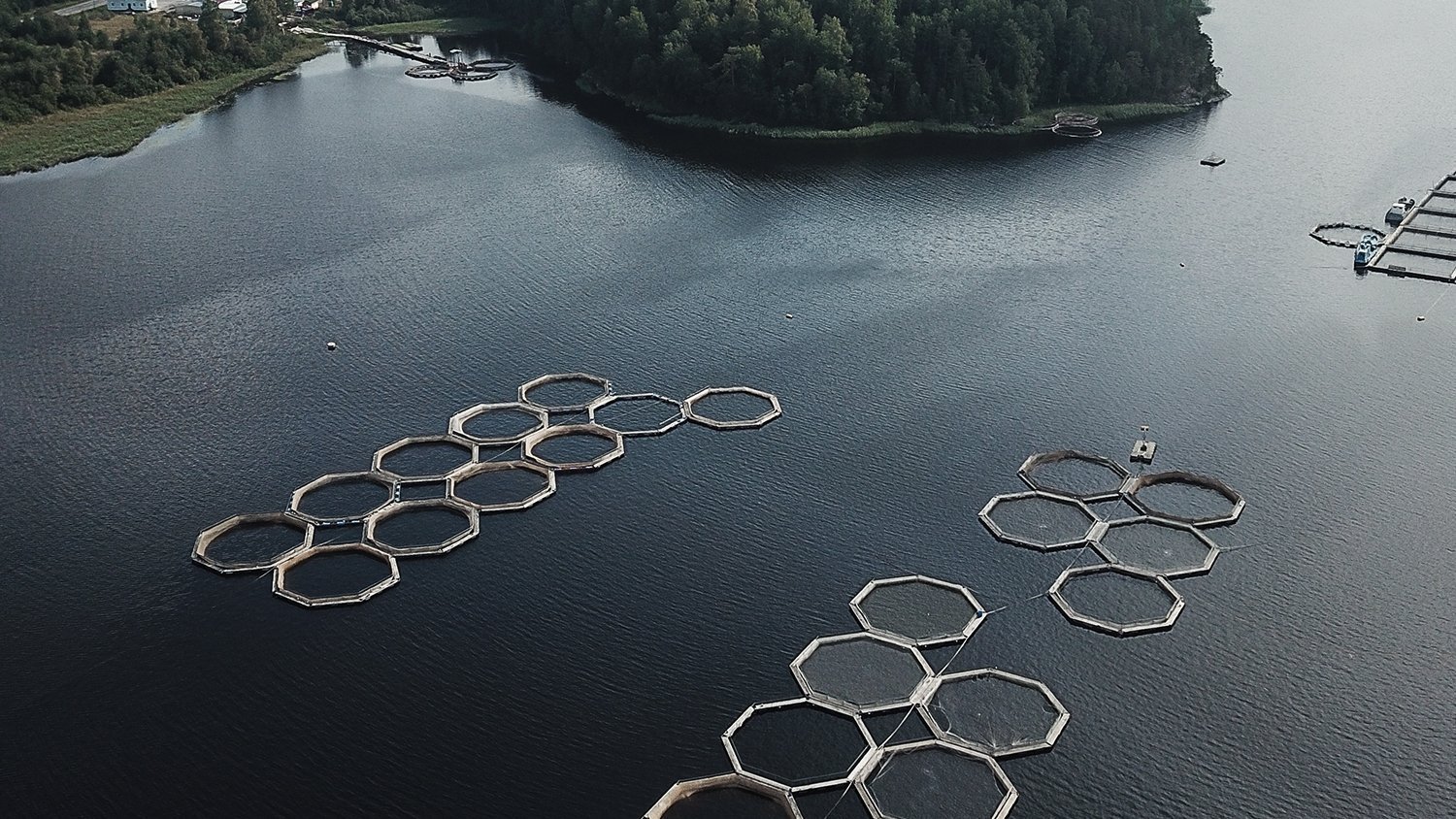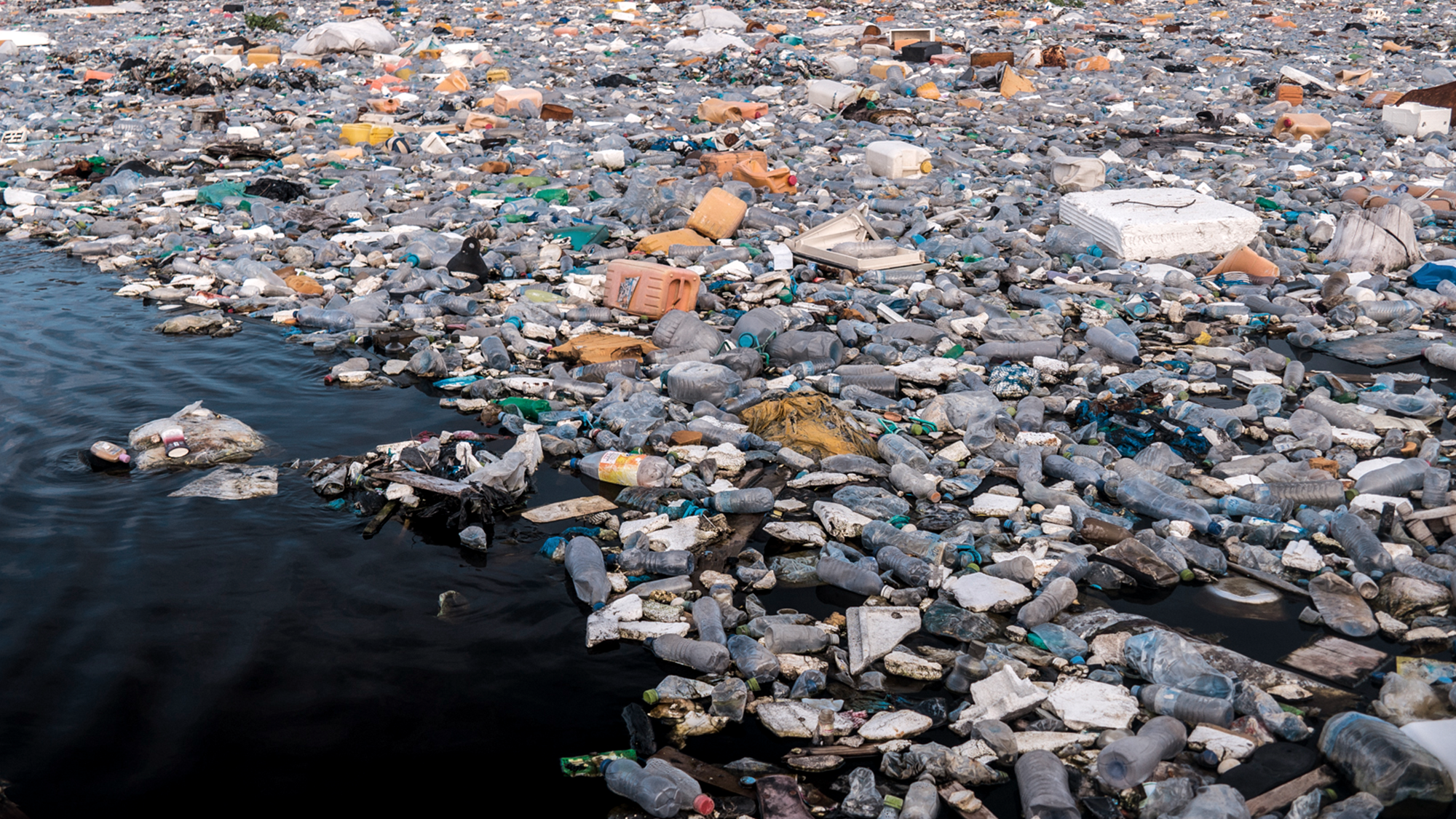Parley AIR: Plastics and the food we eat
How did our food system become intertwined with pollution?
Food is one of our most basic needs as humans. So it’s particularly ironic that we poison the planet that sustains us in order to produce it.
It might not be the most obvious culprit, but plastic and the foods we eat are intertwined in a big way. It goes so far beyond plastic utensils and takeout containers. From the fertilizers we use to grow it to grocery store vegetables encased in plastic film, to the cookware we use in our kitchens, which can contain harmful forever chemicals, it’s almost impossible to avoid plastic being used in at least some parts of the processes that ensure we have food on our tables.
As part of our ongoing Parley AIR series, we’re doing a deep dive into the planet and our food system — how plastics can be found at virtually every phase of food production, how the way we grow food on a global scale is accelerating climate change, and the people pushing to make plastic-free food accessible.
Take the Parley AIR Pledge and receive our monthly newsletter
Sidedressing nitrogen on corn crops
Plastic and agriculture
Our food systems are responsible for about one-third of human-caused greenhouse gas emissions, the toxic gasses that accelerate climate change. A big contributor is nitrous oxide released by fertilizers used for crop production.
Synthetic fertilizers are often made from petrochemicals, i.e. oil. And as the global shift to green energy intensifies, oil companies are looking to pump demand for other products that use oil, including plastics and petrochemicals like fertilizer.
The International Energy Agency (IEA) expects that by 2050, over half of gas consumption will go towards producing hydrogen, a key component of ammonia, which is the base of nitrogen fertilizer. Half.
Currently, the synthetic ammonia used to make nitrogen fertilizer uses about 5% of the world’s oil and gas, but experts expect this source to be the largest driver of growth in global oil demand through 2026. A 2021 report by the Institute for Agriculture and Trade Policy, GRAIN, Greenpeace International found that in the past 60 years, synthetic fertilizer use has grown almost 10-fold. The report also found that in 2018, the synthetic nitrogen fertilizer supply chain was responsible for estimated emissions of 1,250 million tons of CO2, a fifth of the greenhouse gas emissions caused by agriculture and about 300 million tons more than the annual CO2 output of the global aviation industry.
Synthetic fertilizers also aren’t the only agrochemicals tied to plastics and planet-warming emissions. Even fertilizers that aren’t oil-based are often coated in plastic before they’re spread across the Earth.
A 2022 report from the Center for International Environmental Law highlighted the impact. The plastic from coated agrochemicals directly introduces microplastics into the environment, compounds the hazards caused by synthetic fertilizers, especially to nearby waterways, and becomes another way in which microplastic enters our bodies.
These fertilizers also have deep ties to industrial fishing. The fish that are caught in poorly regulated high seas — which are rife with climate, human rights, and ecological disasters — are largely used for fertilizers or livestock feed.
In 2021, the Food and Agriculture Organization of the United Nations published a report that stated there is now more microplastic pollution in Earth’s soil than in its oceans. It also estimated that 12.5 million tons of plastic products were used in plant and animal production in 2019. This food was wrapped in another 37.3 million tons of packaging.
Even in organic agriculture, greenhouses and film used to protect crops from frost are mostly made from plastic.
Industrial fish pens in lake
PLASTICS AND SEAFOOD
It’s not just the food that we grow in soil. Both the fishing and aquaculture industries are huge contributors to plastic waste, climate change and the devastation of our Blue Planet. You’ve probably heard that abandoned fishing nets, lines and rope account for 10% of plastic garbage in our oceans, including almost half of the Great Pacific Garbage Patch. But fishing isn’t the only way seafood ends up being part of our dinner.
Globally, aquaculture — farming seafood and other aquatic life in pens in the oceans — supplies more than half of all seafood produced for human consumption. And it uses a ton of plastic.
Nets, foam buoys and bags used for storing harvests are obvious plastic sources, but it’s actually when these items start to break down that causes the biggest damage. As aquaculture has boomed in popularity, so has the amount of microplastics in the oceans. It’s not just the nets and buoys. Fish cultivated in aquaculture farms are fed pellets through plastic pipes that shed microplastics into the waters in which the fish feed. Eventually, that plastic gets into us.
PLASTICS IN US
On average, we could be eating about a credit card’s worth of plastic every week. Plastic and the toxic chemicals it's made from end up in everything from beer to breast milk, and scientists are just starting to study the dire effects this has on human health.
Here’s what we know so far about plastics as a global health crisis (through the lens of plastics and women’s health, covered previously in this Parley series).
PLASTICS AND FOOD PACKAGING
Food packaging is the most visible source of plastic people see. It’s almost impossible to avoid – clamshells full of lettuce, plastic bags full of grapes, convenient, squirtable snacks for kids with plastic twist-off tops. Even the tiny barcode stickers on fruit. Grocery stores are packed with plastic.
Food packaging and takeout containers make up almost half of the material in landfills in the U.S., the largest producer of plastic waste in the world. In the U.S., food also accounts for up to one-third of a household’s carbon footprint.
It’s often touted as a way to reduce food waste, but that’s not always the case. A study by the sustainability non-profit Wrap found that plastic packaging around produce like bananas and cucumbers does not reduce food waste. Instead it often forces people to buy more than they will use. Then there’s takeout. Plastic litter from takeout orders — including cups, plates, cutlery and straws — is a main source of the roughly 20 million metric tons of plastic pollution that ends up in the natural environment annually. It flows from restaurants to rivers and into our oceans.
Plastic-free stores do exist, but especially in Western countries, they’re places only the wealthy can afford to shop.
FIGHTING PLASTICS IN FOOD
If we can change plastics in the food system, we can change so much more than that. It can feel overwhelming and even futile to take individual steps towards reducing single-use plastics in daily food routines, but it all adds up to create the pressure for change — especially if these steps become the starting point for further-reaching activism.
There are several groups working to help businesses and consumers make more informed decisions, and to hold the biggest polluters of plastics and toxic chemicals accountable:
UPScorecard helps restaurants, concert and sporting venues and other businesses choose plastic-free and sustainable packaging for food and drinks.
Plastic-Free Eateries is a database of restaurants that provide plastic-free takeout and services that can deliver food in reusable containers that are returned to the restaurant after you’re done.
Post-Landfill Action Network (PLAN) is working with college campuses in the U.S. to fight the linear consumption models that prop up the single use plastics industry. They’re also bringing attention to the worst campus offenders — Pepsi, CocaCola and Chick-fil-A — so students can put pressure on colleges to stop supporting the biggest campus plastic polluters with multi-million dollar contracts.
The Sierra Club has a campaign demanding the EPA hold 3M, DuPont and Chemours accountable for producing forever chemicals. Sign the petition here
Look for local legislation (or propose your own). In January 2023, New York City Council passed the Skip the Stuff bill, which prohibits restaurants from including utensils, napkins, condiment packets and extra containers with takeout orders unless specifically requested. No such bill in your city? When he was just 19 years old, Ocean Uprise’s Dyson Chee helped pass the strictest ban on single-use plastic utensils, straws and polystyrene foam containers in the State of Hawai‘i.
Start a garden or join a community one. You don’t need a plot of land to know the satisfaction of eating a plant you grew from the seed.
On your own, you can also shop local, at farmers markets, or subscribe to a CSA. Also buy food in small quantities so you don’t waste it. If it’s in your budget, seek out no-packaging grocery stores near you.
Of course, for the gigantic shifts we need to actually happen, policymakers need to ensure people have access to plastic-free or plastic-reduced food.
Kenya is entering year 6 of its own plastic ban, which strictly bans single-use plastic bags and carries a fine of up to $40,000 for anyone found using, selling or manufacturing single-use plastic bags, including food vendors. Bangladesh was the first country to ban single-use plastic bags, back in 2002. Thailand is also 2 years into its ban on single-use plastic bags at major stores and supermarkets, and Rwanda also has a ban.
Canada’s broader single-use plastic ban went into effect in the final days of 2022. By the end of 2023, it will be illegal to sell or provide plastic checkout bags, cutlery and straws in the country, including in grocery stores. The European Union, which includes 27 countries, banned single-use plastic items for which there are non-plastic alternatives for, back in 2021.
None of these laws address plastics at every stage of the food system, nor plastic packaging, like the cellophane that encases fruits and vegetables, clamshells or plastic barcode stickers. But plastic bans in any form are a huge step forward.
There is still so much work to be done, but progress is within reach.
In March 2022, United Nations Member States endorsed a landmark treaty on plastic pollution. The global plastics treaty addresses the full lifecycle of plastic, from the time it’s created to after it’s thrown out. The current draft takes aim at reducing plastic packaging like the kind ubiquitous in grocery stores around the world and the leaders agreed to sign a final version into action by 2024.
Spain’s ban on plastic wrapping on fruits and vegetables sold in grocery stores goes into effect this year, following the same ban in France, which took hold in 2022. Both laws do allow plastic packaging if the produce weighs more than 1.5 kilograms (about 3.3 pounds) but it’s a huge step in giving shoppers plastic-free options.
TAKE ACTION
Read up, make noise, spread the word and give others the tools to do the same. Systemic change won’t come unless we demand it.
IG @parley.tv | FB @parleyforoceans
#ParleyAIR




































